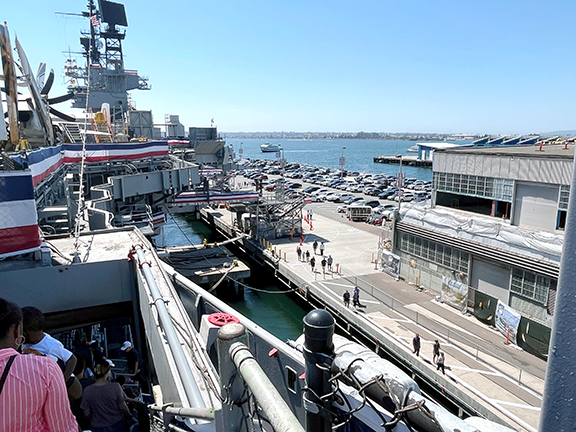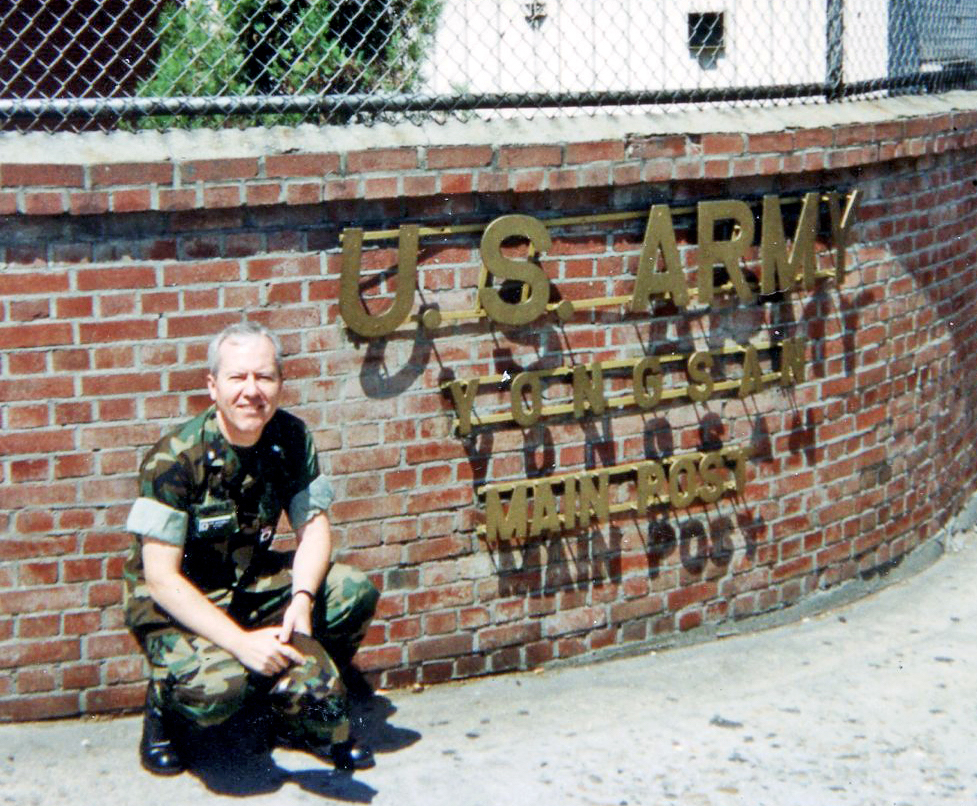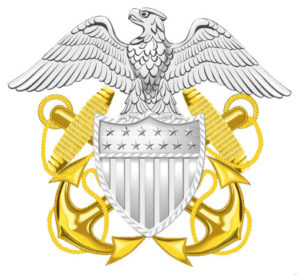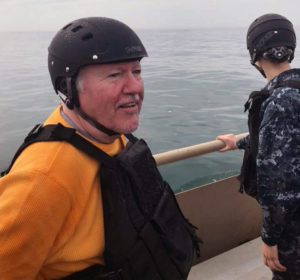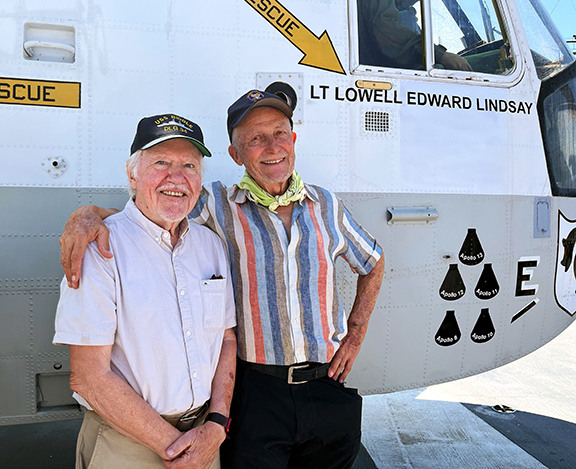 I had the privilege of attending a ceremony aboard the USS Midway Museum Friday, August 2, to honor Lowell Lindsay, a fellow Navy veteran.
I had the privilege of attending a ceremony aboard the USS Midway Museum Friday, August 2, to honor Lowell Lindsay, a fellow Navy veteran.
Lowell and his wife, Diana, ran Sunbelt Publications, publishers of many volumes on the natural sciences, historical and cultural issues, and the San Diego region, for more than 30 years. Diana has a long association with the Anza-Borrego Foundation, serving as its President and as a long-time member of its Board of Trustees. I’ve been an ABF trustee for about a dozen years and President for the past four years.
In recent years, I’ve had the pleasure of getting to know the Lindsays. Conversing about our earlier years, Lowell and I came to realize we each served in the Navy in the Gulf of Tonkin, off the coast of northern Vietnam and southern China, in the summer and fall of 1969.
Lowell was a helicopter pilot, serving various roles, such as search-and-rescue, and conveying personnel and supplies among the ships in the Gulf. I was stationed on the USS Biddle (DLG-34), a guided missile “destroyer leader,” later classified as a cruiser. It’s possible, Lowell and I realized, that he may have landed on the Biddle as part of his duties.
Among the aircraft carriers his squadron operated from was the USS Midway and on the flight deck of the USS Midway Museum now is the actual helicopter he piloted.
Last fall, Diana had invited me to join her, Lowell, her son, and a couple of friends on a VIP tour of the Midway Museum that she had won in a raffle. I had posted about it. During the tour, Diana said later, she noted the presence of a pilot’s name on “Lowell’s helo.” She inquired about how Lowell’s name might be added. And then she brought it about.
She wanted to keep it a surprise for Lowell, however. Guests to the event on August 2 were aware of what was about to happen, but Lowell was kept unaware. He knew the event was to celebrate his and Diana’s 60th wedding anniversary. Which it was, as well.
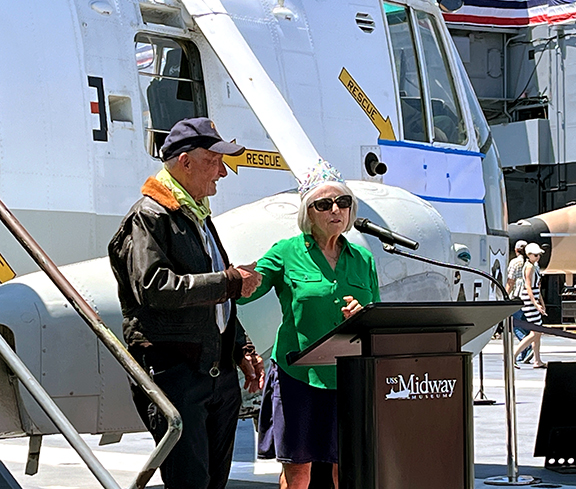
At the lectern next to the helicopter, and before the collection of family and friends on the Midway flight deck, Diana talked about the couple’s anniversary and then directed Lowell’s attention to the helicopter. Below the window at the pilot’s station was a sheet of paper, evidently placed there to cover something. She urged him to remove it.
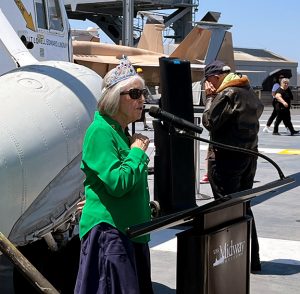 When Lowell removed the paper, he became quietly emotional (at right), while the group cheered. Under the window, it now read “LT LOWELL EDWARD LINDSAY.”
When Lowell removed the paper, he became quietly emotional (at right), while the group cheered. Under the window, it now read “LT LOWELL EDWARD LINDSAY.”
The rest of the afternoon was filled with “sea stories,” reminiscences among Lowell and fellow squadron mates, and hearty congratulations to Lowell and Diana.
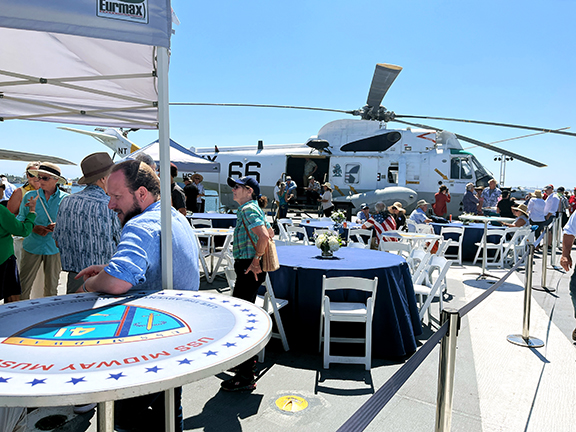
Bravo zulu, LT Lindsay! And Diana!
The USS Midway Museum is berthed alongside the Navy Pier in San Diego Harbor. It is one of the most-visited attractions in San Diego and the most-visited maritime museum in the United States.
The flight deck offers four acres of open-air space 50 feet above the bay. It is the site of many events and spectacles.
